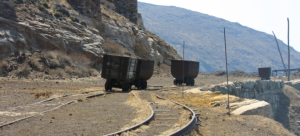
It will come as no surprise to Macro Investor readers to hear that a new report by Newport Consulting is suggesting that mining capex plans are being ratcheted back fast.
The report, the Mining Business Outlook Report 2012-2013, surveyed 55 mining executives and found that confidence is down sharply, and plans to invest are eroding fast:
This year’s Mining Business Outlook Report paints a more sober outlook for the mining industry than in our last two surveys. In 2012, mining leaders are attempting to grapple serious issues such as a skills and labour shortage, a difficult business and policy environment and a looming surge in overseas competition, even as the demand forecast indicates ongoing buoyancy but also some softening in some sectors of the resources industry both in the short and medium term market. The takeaway message from our respondents can be summarised as follows.
• Investment outlook to remain cautious for the coming year. The mining industry appears to be in survival mode, with only 25 per cent of companies planning to invest in major CAPEX projects this year compared with 52 per cent last year. When asked to state their reasons for curbing spend on CAPEX, the leaders surveyed listed factors including volatile prices (24 per cent), tough market conditions (21 per cent) and increasing business costs, including for energy (21 per cent).
• The current business and policy environment is tough on miners. The rising costs of labour and energy were cited as key factors behind a subdued business outlook for many (29 per cent) of our respondents. With union action said to be hampering one in five projects at present, and with more union action likely as many existing agreements face review soon under the Fair Work Act, mining leaders are finding it difficult to achieve full productivity. They also anticipate massive cost spikes with the carbon tax now in effect and warn that it will make Australia uncompetitive on the international market.
• Productivity lag highlights a need for active operational management. It is no secret that technological advancements have contributed to most of the industry’s productivity gains over the past decade. Alongside investment in technology, mining companies now need to further boost productivity, but are finding themselves confronting a growing labour and skills shortage. Newport Consulting has identified effective active management as essential for mining companies to maintain throughput and profits and in retaining talent, especially at the leadership level.
• The labour and skills crisis is far from over. Last year’s Mining Outlook report identified a looming labour and skills crisis, with an estimated shortfall of 36,000 tradespeople, 1,700 mining engineers and 3,000 geoscientists alone by 2015. The shortage is still endemic, with mining companies now resorting to a mix of overseas, local and inter-regional recruitment to stem the labour gap. Meanwhile, current industrial relations are compounding the skills crisis as unions continue to place unreasonable demands on employers, hampering an estimated one in five mining projects at present.
• Coal and iron ore prices are significantly down, adding to the growing challenges. Global economic uncertainty in Europe and
North America is having an impact on the Asian economies and, in turn, Australia. The spot price for Australian thermal coal fell 36 per cent in the 18 months from January 2011 to June 2012, plummeting from over US$140 per tonne to a shaky US$90. Resource companies cannot sit back and wait to see how sustained these price falls are. They must address the challenge of falling prices by either focusing on costs or driving down the cost per tonne by sustainably increasing throughput.• Infrastructure needs to be prioritised by the government. The vast potential of mining projects in Queensland and Western Australia has highlighted the need for more economic and social infrastructure in these regions – from better rail, road and air links, to social assets such as housing, health care and community services. Many mining companies now invest in their own transport infrastructure, such as overland conveyors to transport their output from pit to port. Such infrastructure currently accounts for an estimated 80 per cent of capital expenditure. Our mining leaders called for more government support on this front.
Obviously this is an industry report so take some of it with a grain of salt.
Interesting nonetheless.

